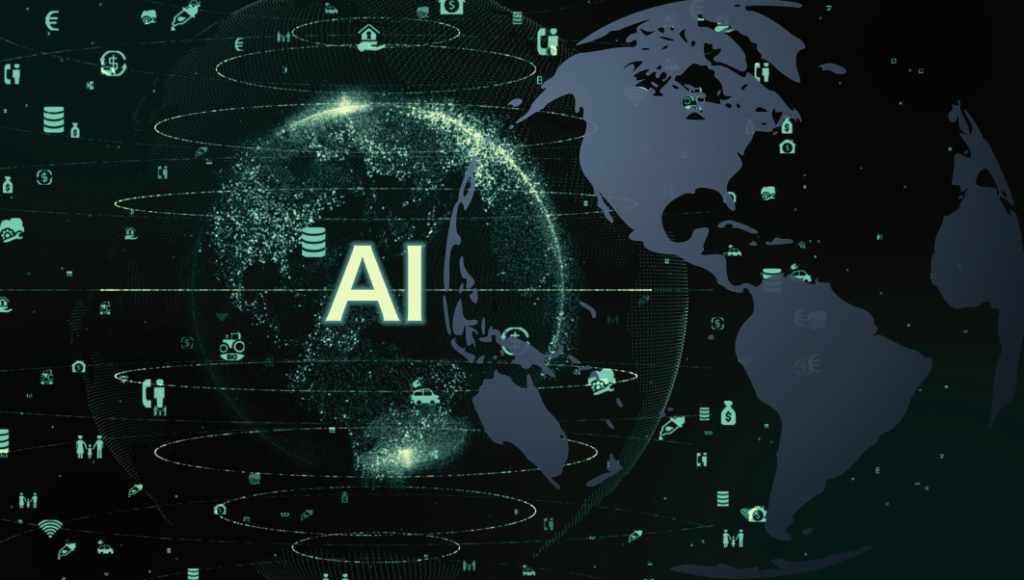After a whirlwind year where AI technology has seen a mainstream boom at an astronomical scale (think ChatGPT) and with vast implications for the future of all workers, we are left begging the question of how these incredible feats of technology might just be used for societal good. Virtually every big company now has multiple AI systems and counts the deployment of AI as integral to their strategy, whether this is simply in logistics planning and financial modeling or in the use of language models to aid in customer satisfaction. Particularly over the last few years, the technology has made remarkable progress and become widely available. With the recent innovations in AI’s efficiency and range of capabilities, it is on the rise for use within Sustainability operations and initiatives and being tapped to address the impacts of climate change.
AI can accelerate the journey to net zero, impacting global efforts at sustainability in areas such as energy consumption, CO2 removal, education, solar engineering, and finance. AI can also help in monitoring deforestation, creating new low-carbon materials, and implementing greener transportation. Broadly we can understand that AI has the potential to further our understanding of climate change by expanding the reach of knowledge and by optimizing our existing systems to accelerate decarbonization and increase climate risk resiliency. Find out more about AI sustainability use cases below:
Use Cases for AI
Sustainability and ESG Reporting:
With reporting mandates for climate-related data on the rise in Europe and in the U.S., companies are increasingly being asked to gather, analyze, and report on a larger set of sustainability data points and metrics than ever before- with an emphasis on accuracy. Unfortunately, the data sources when it comes to emissions-related data or even waste, water, and energy, can be complex and divided, leading to insufficient analyses, inconsistent and error-riddled reporting, and greenwashing claims at worst. Artificial intelligence can be a game changer for managing ESG efforts, parsing through the vast sea of data, and yielding actionable insights based on the data. AI is now such a large part of automated software solutions that integrate data and provide emissions tracking features, helping to validate data, provide real-time data fusion, and integrate into current standards and frameworks. Reporting no longer has to be a burden.
AI large language models are also being used to help write and analyze corporate sustainability reports using the most up-to-date research and industry standards as a baseline of comparison. For example, new online programs like ChatReport are popping up every day where you can upload and analyze your report within minutes. AI and machine learning programs have also become some of the primary readers of ESG reports and communications, parsing and mining company data for rating and ranking entities such as S&P Global or the corporate knights.
Reducing the Burden of Carbon Accounting
One area where AI can make a significant impact is greenhouse gas reporting and carbon accounting. the process of calculating a carbon footprint can be time-consuming and cumbersome, requiring a significant amount of manual effort and data cleaning. Mapping business activities to the right inputs and identifying corresponding emission factors is certainly a feat for manual data entry workers, making it difficult for companies to accurately report on their carbon emissions, especially supply chain activities. AI can be used to accelerate the time for calculation, flag data anomalies and outliers of GHG data, resolve inconsistencies, and leverage smart emission factor recommendations. Companies that use automated solutions for emissions measurements, as well as tracking, are much more likely to measure emissions accurately and more likely to actually reduce emissions in line with their targets based on recommendations by machine learning models.
Forecasting, Decarbonization, and Energy Efficiency
When it comes to decarbonization AI can help reduce energy consumption in buildings, predict weather patterns to assist in planning for extreme weather events, and lift the efficiency of renewable energy systems. For example, AI can forecast the optimal times and locations for generating maximum energy from renewable sources like wind turbines and solar panels, ultimately improving their overall efficiency.
One of the most transformative applications of AI is in its predictive analytics. AI algorithms, fed with vast datasets, can predict future energy consumption patterns. This allows businesses to optimize energy usage through peak load analytics or demand response programs, leading to cost savings and, more importantly, a reduced carbon footprint. AI can also change the way we approach the estimation of future carbon emissions and the direction of an organization’s goal tracking. By analyzing historical data and using predictive modeling, AI can help companies identify trends and patterns in their carbon emissions and develop strategies to reduce them. Predictive analytics can also aid in equipment maintenance. One of the key aspects of energy wastage is equipment malfunction or sub-optimal operation. AI algorithms monitor equipment performance in real-time, detecting anomalies or inefficiencies. By predicting when equipment needs maintenance or replacement, we can avoid energy wastage and improve overall efficiency.
- Intelligent HVAC systems: Heating, ventilation, and air conditioning (HVAC) systems are among the largest consumers of energy in buildings. AI-driven HVAC systems adapt based on occupancy, external weather conditions, and historical data. This ensures optimal temperatures while minimizing energy consumption.
- Smart Grid Management: Electric grids are now smarter than ever, thanks to AI. These systems can predict energy demand peaks, optimizing distribution and reducing strain on the grid. Additionally, they facilitate the integration of renewable energy sources, ensuring efficient energy storage and release.
- Data-Driven Decision Making: Beyond automating systems, AI provides detailed insights and analytics on energy consumption patterns. Infrastructure managers and decision-makers can use this data to implement strategic changes, further optimizing energy use.
Climate Risk Modeling and Location Data:
AI systems can show where there are opportunities for investing in risk mitigation projects and technologies. Geospatial data combined with advanced machine learning recommendations can enable investors to pin climate impact geographically and identify which companies’ operations or assets are in the most at-risk areas, or, conversely- where the best climate-resilient locations are at to conduct business operations. Even choosing specific sites based on the availability of renewable energy or where the energy grid residual mix is cleaner in terms of carbon intensity can come into play with AI.
With the uptick in climate-related natural disasters, better early warning systems and disaster management tools boosted by AI can drastically reduce catastrophic mortality rates. For example, Google’s AI-enabled flood forecasting platform can warn people in over 60 countries of incoming floods up to seven days in advance.
Understanding Environmental Implications
The realization of the idea of a machine that can learn and think independently has understandably been met with both optimism and concern about the future of humanity. In addition to the ethical concerns being raised in regard to AI’s development at the hands of over-exploited workers or its potential to replace workers altogether, the environmental impact concerns of AI should also garner some attention, particularly its energy and carbon impact.
The processing and storage of data required for algorithm training and AI necessitates the operation of data facilities which consume vast amounts of energy. According to the International Energy Agency, electricity consumption from cooling data centers could be as much as 15% to 30% of a country’s entire usage by 2030. In addition, cooling a typical data center requires roughly 400,000 gallons of fresh water daily, which raises concerns about freshwater scarcity.
It is easy to forget that running algorithms to process data also requires energy consumption. In the race to utilize AI’s immense potential to drive business and social progress with efficiency gains, we must simultaneously ensure that we address the technology’s power and performance demands (aka energy consumption needs). In short, we must not solve a problem with another problem.
About WatchWire
When it comes to software, WatchWire provides a cloud-based energy and sustainability management platform that utilizes AI to enable your organization to achieve their reporting and sustainability goals. WatchWire’s offers these features and more:
To learn more about WatchWire, visit our website and blog or request a demo.
Connect With Us
Find WatchWire on LinkedIn or Twitter!
 Top Sustainability Trends to Watch in 2025
Top Sustainability Trends to Watch in 2025

 Log In
Log In









